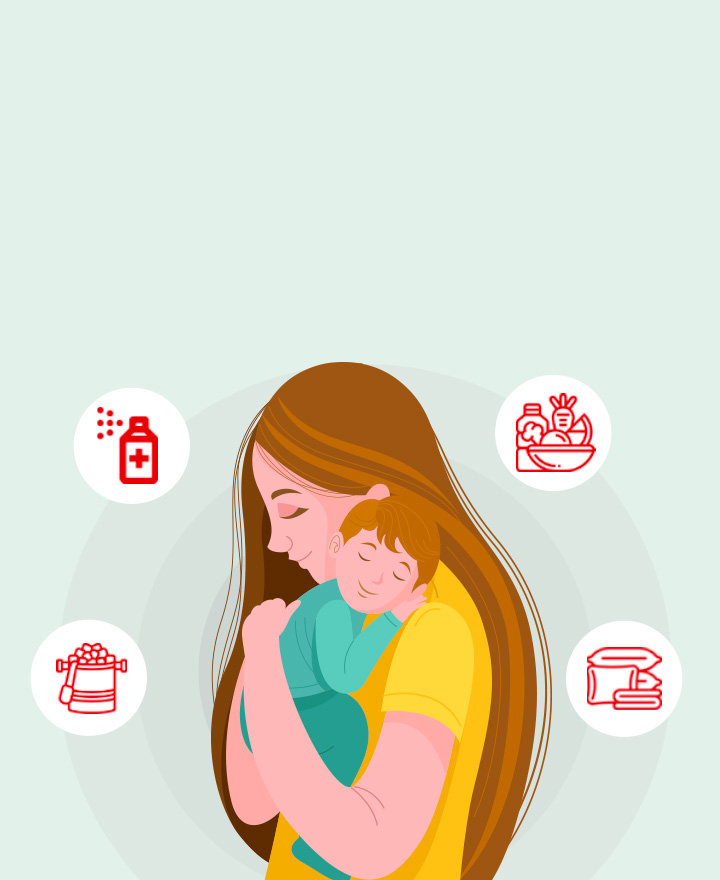

Baby’s First Solids: Important Dos and Don’ts for a Smooth Transition
Transitioning baby to solids is a significant step in your baby’s development. Introducing solids to your baby is fun but at the same time it can also be a little daunting. Making sure this transition phase is safe and fun for you and your little one is essential. This guide provides information on introducing solids, including setting the right mood for feeding and what not to do. By following these steps, you will ensure your baby is comfortable with new textures, tastes, and eating habits that will be healthy for a lifetime. Read on to know more.
Tips for Your Baby’s Transition to Solid Foods
The Dos
1. Start at the Right Time
Begin the process only when your baby shows readiness signs, such as sitting up with support or showing interest in your food. Rushing into transitioning baby to solids too early may lead to digestion issues.
2. Offer Single Foods First
Start with single-ingredient purees, like mashed bananas or steamed carrots. This helps identify any food sensitivities early and keeps the process simple.
3. Make Mealtime Fun
Turn meals into a pleasant experience. Your enthusiasm can make your baby more curious about the new foods. A positive approach will ease their transition to solid foods.
4. Consult Professionals
Before making significant changes to your baby’s diet, consult a paediatrician. They can help identify allergies or intolerances and recommend the best foods for your baby’s growth and development.
5. Stay Patient
Babies often take time to accept new foods. Keep offering a variety of options without pressuring them to eat. Transitioning baby to solids is a gradual process, not a race.
The Don’ts
1. Don’t Skip Breast Milk or Formula
Solid foods complement, not replace, breast milk or formula during the first year. Nutrition needs are still primarily met through milk feeds.
2. Avoid Honey or Cow’s Milk Too Early
Babies under one year should avoid honey (due to the risk of botulism) and cow’s milk as a primary drink, as it lacks essential nutrients for their growth.
3. Don’t Introduce Multiple Foods at Once
Introducing several new foods simultaneously can make it challenging to track reactions or preferences. Allow the baby to explore a food item for a few days before giving something new. This also allows you to monitor how each food is tolerated and adjust based on the baby’s taste preferences and needs.
4. Say No to Force-Feeding
Pushing your baby to eat can create negative associations with food. Trust their appetite cues and let them explore food at their own pace.
5. Avoid Salty or Sugary Foods
Keep your baby’s meals free from added salt and sugar. Their kidneys are not ready to handle excess salt, and sugar can lead to a preference for sweet tastes.
Conclusion
Transitioning baby to solids is an exciting journey that introduces them to various flavours and textures while prioritising their safety and comfort. Following these dos and don’ts can create a nurturing environment that fosters a positive relationship with food. Careful planning during the transition to solid foods will help establish a strong foundation for your child’s overall well-being. As you plan for your baby’s future, it is also wise to consider investing in health insurance to cover any medical needs.
One of the important components of our overall wellness is also being financially secured. Healthcare emergencies can happen any time, but a good health insurance policy can protect you from such uncertain situations. To know more about Wellness and other health related tips, visit the wellness corner.
Sources: acko.com
Disclaimer: This blog provides general information and discussions about health and related subjects. The information and other content provided in this blog, website or any linked materials are not intended and should not be considered or used as a substitute for medical advice, diagnosis, or treatment. Kindly contact your doctor before starting a new medicine or health regime.
Related Articles
Healthy Finger Foods for Babies
Published on May 30, 2025

















 Health Insurance
Health Insurance  Travel Insurance
Travel Insurance  Car Insurance
Car Insurance  Cyber Insurance
Cyber Insurance  Critical Illness Insurance
Critical Illness Insurance
 Pet Insurance
Pet Insurance
 Bike/Two Wheeler Insurance
Bike/Two Wheeler Insurance  Home Insurance
Home Insurance  Third Party Vehicle Ins.
Third Party Vehicle Ins.  Tractor Insurance
Tractor Insurance  Goods Carrying Vehicle Ins.
Goods Carrying Vehicle Ins.  Passenger Carrying Vehicle Ins.
Passenger Carrying Vehicle Ins.  Compulsory Personal Accident Insurance
Compulsory Personal Accident Insurance  Travel Insurance
Travel Insurance  Rural
Rural